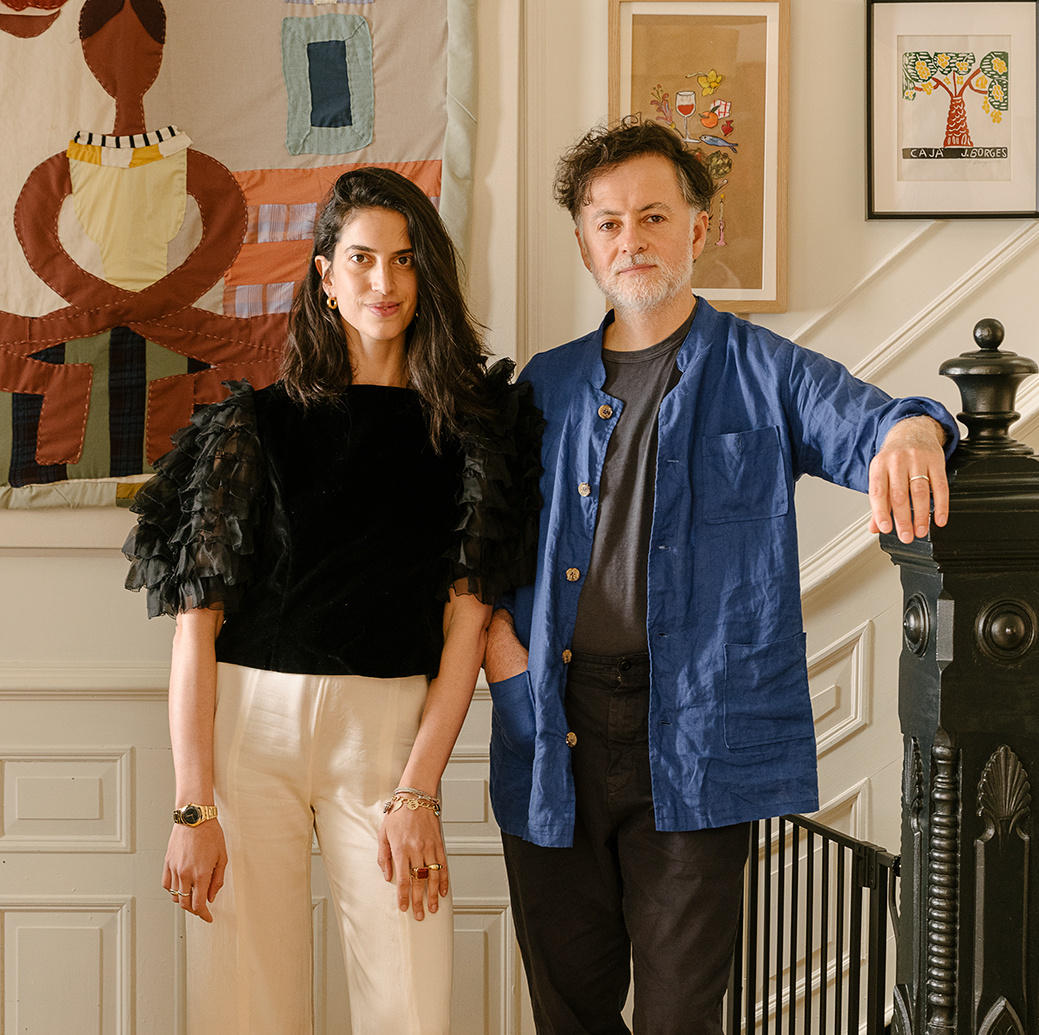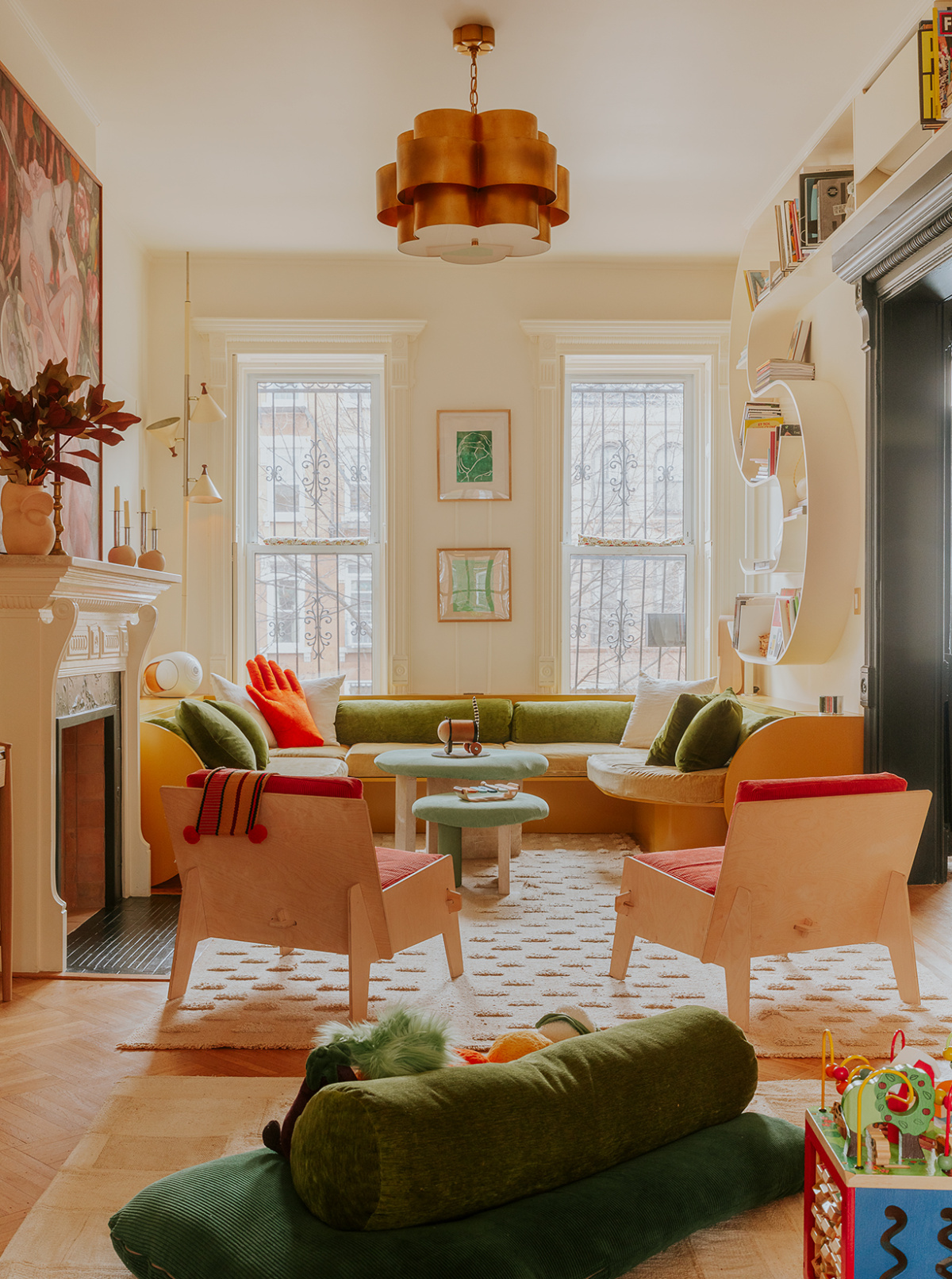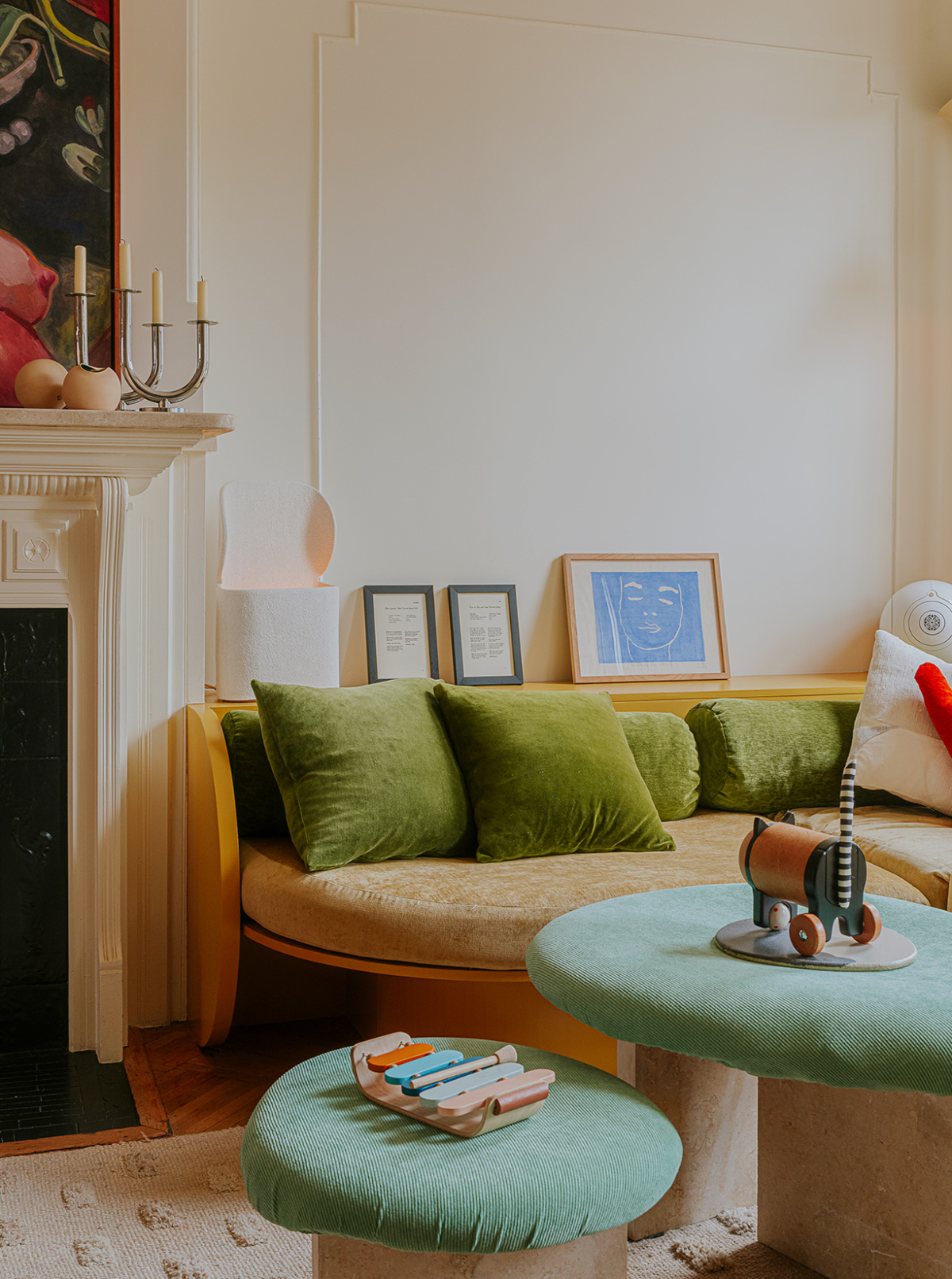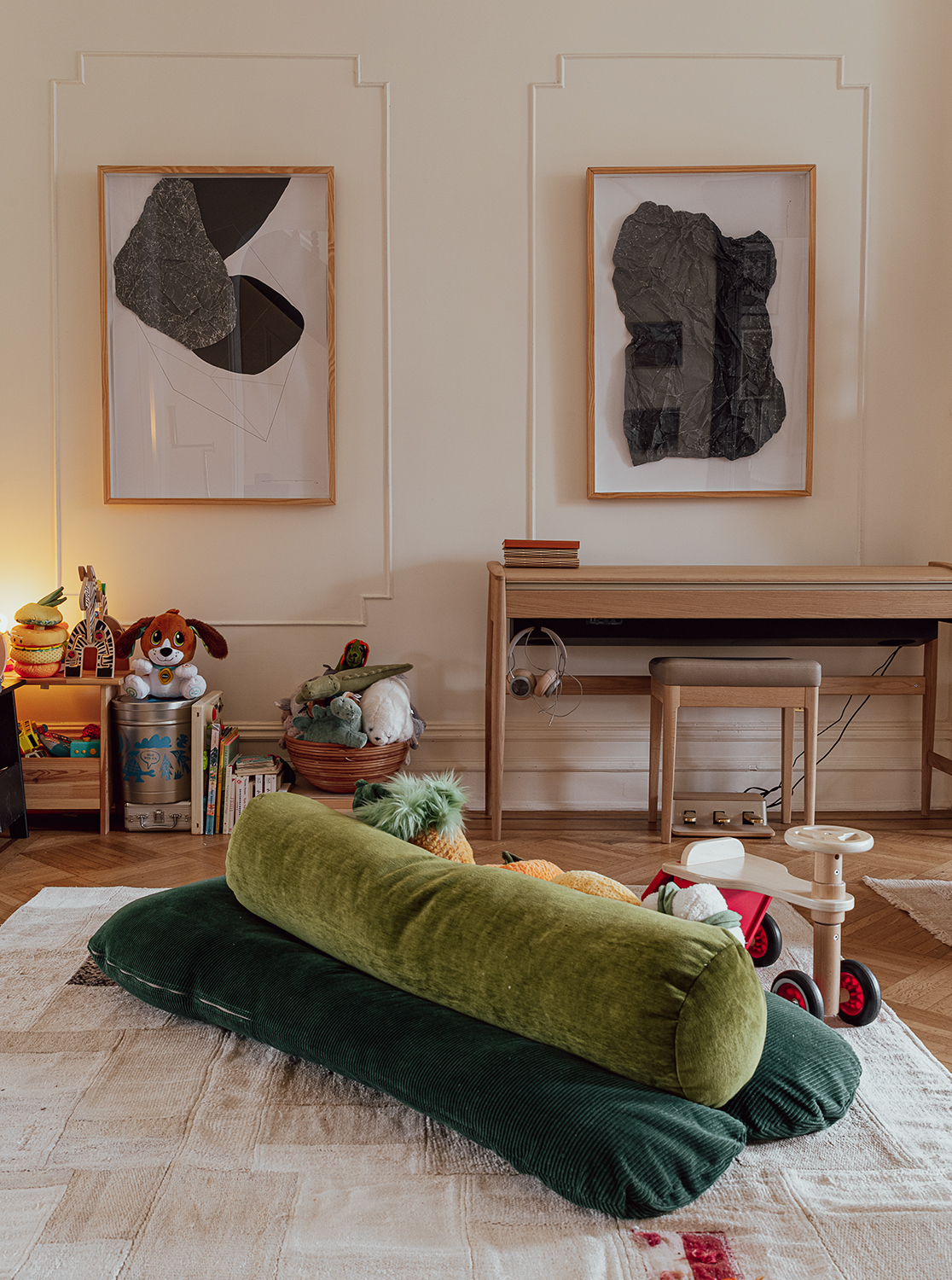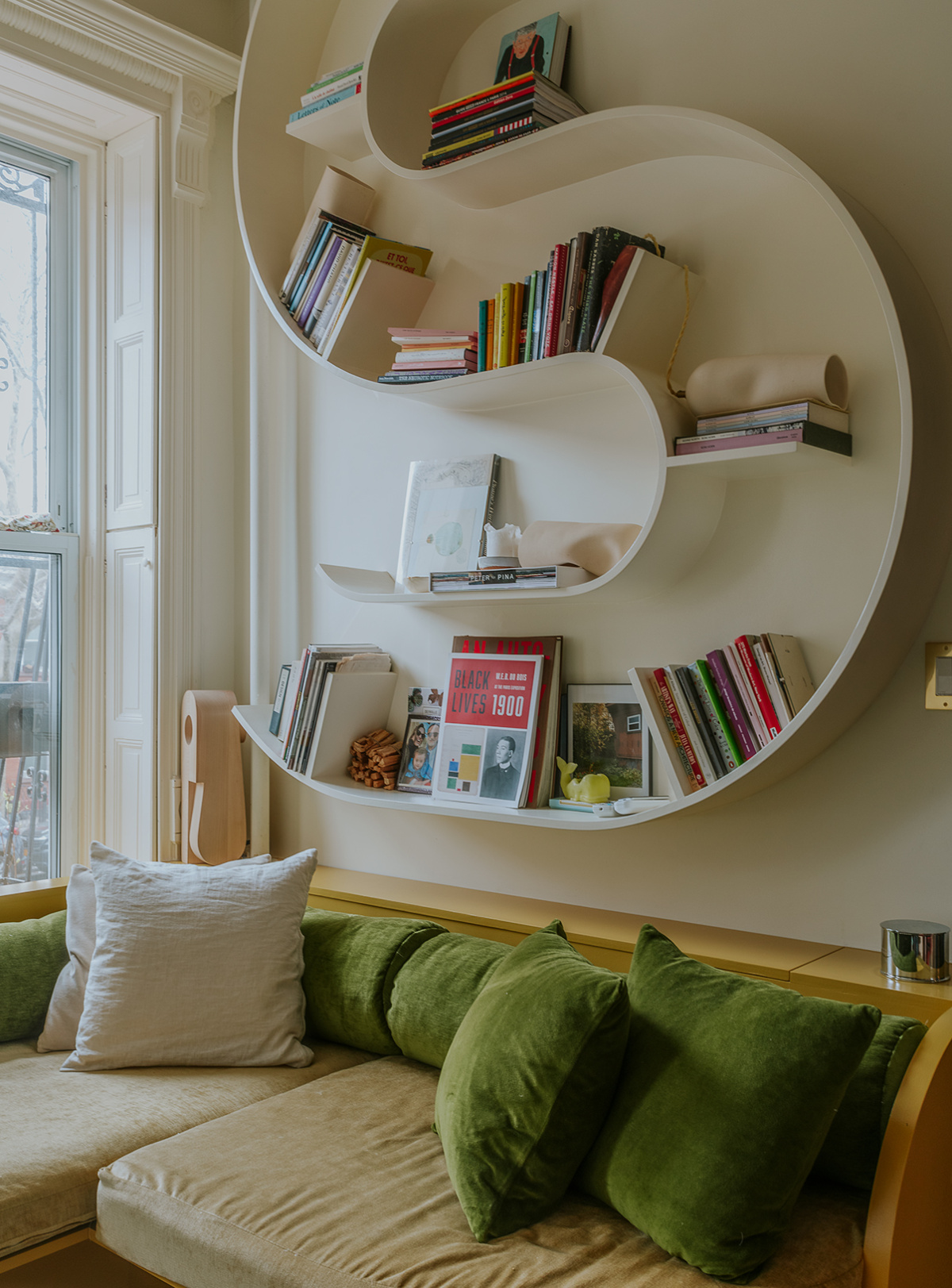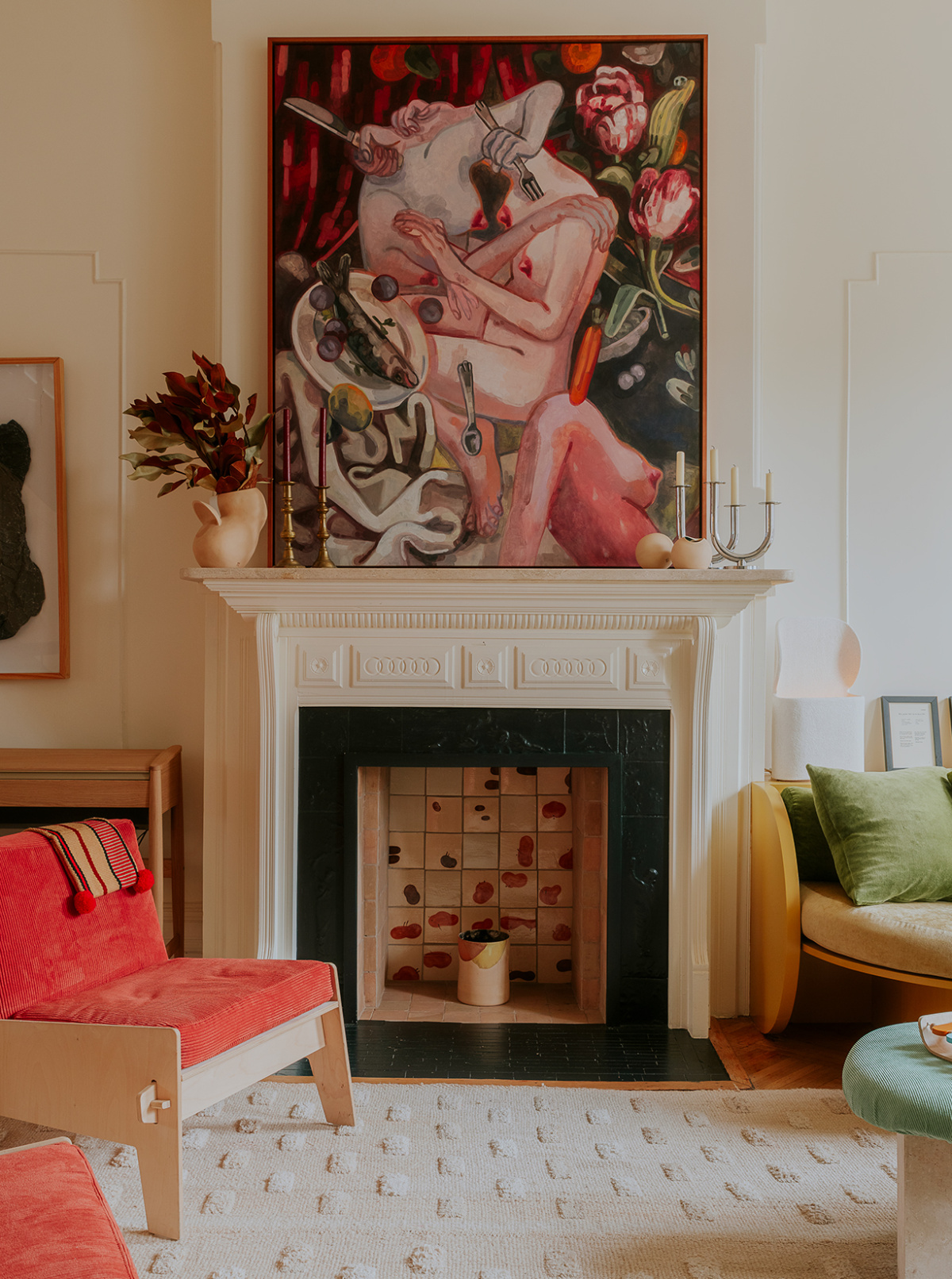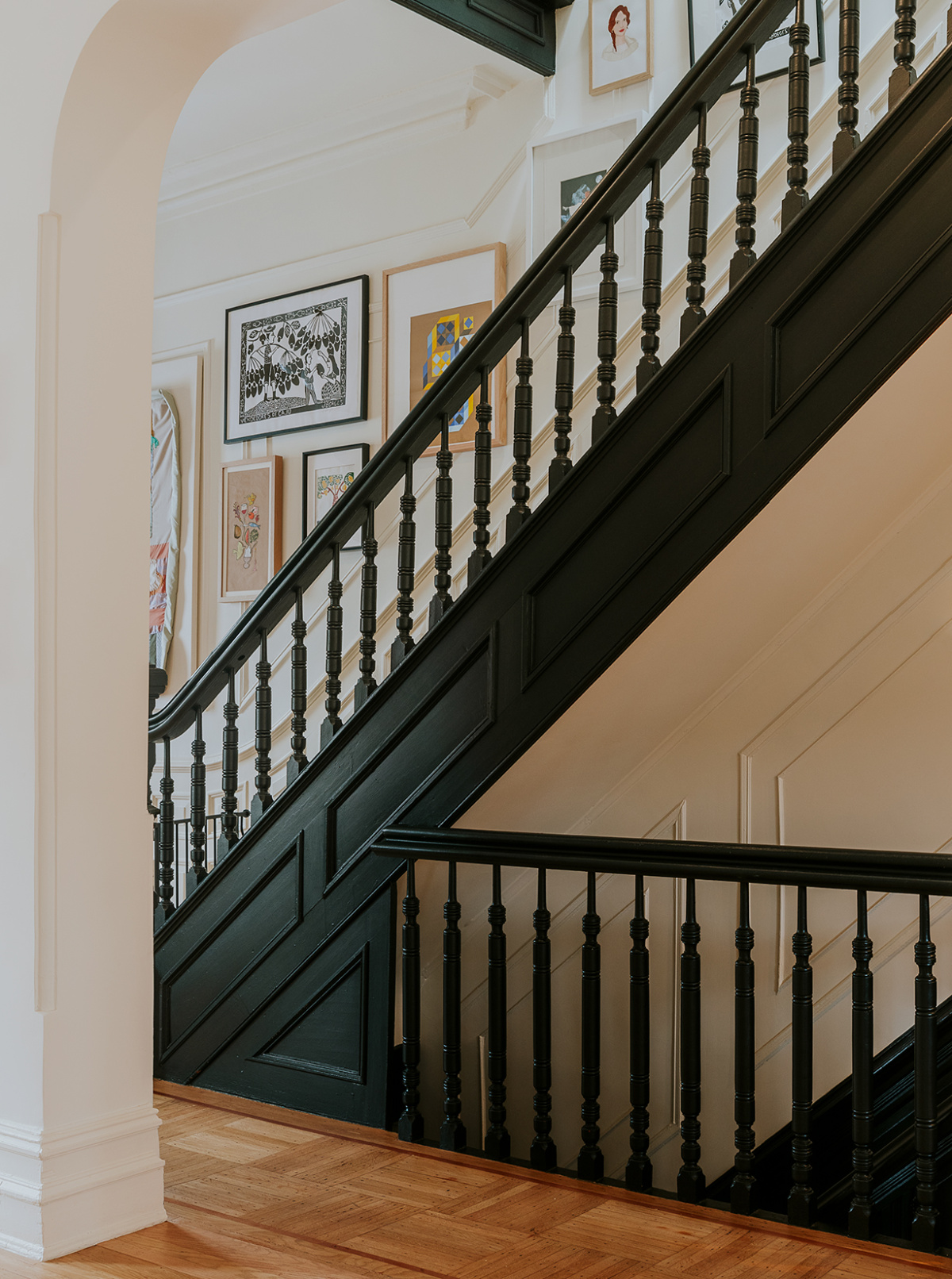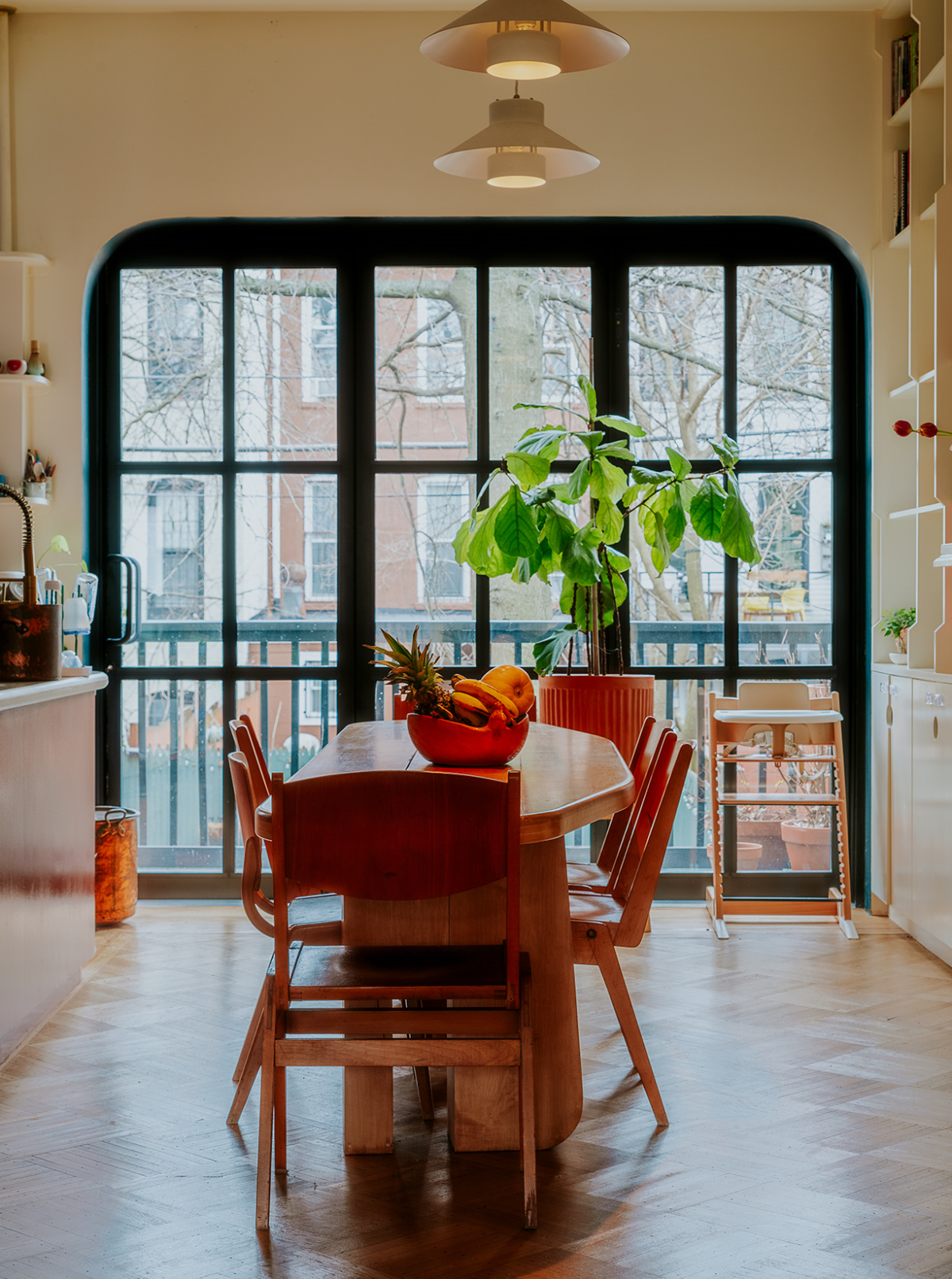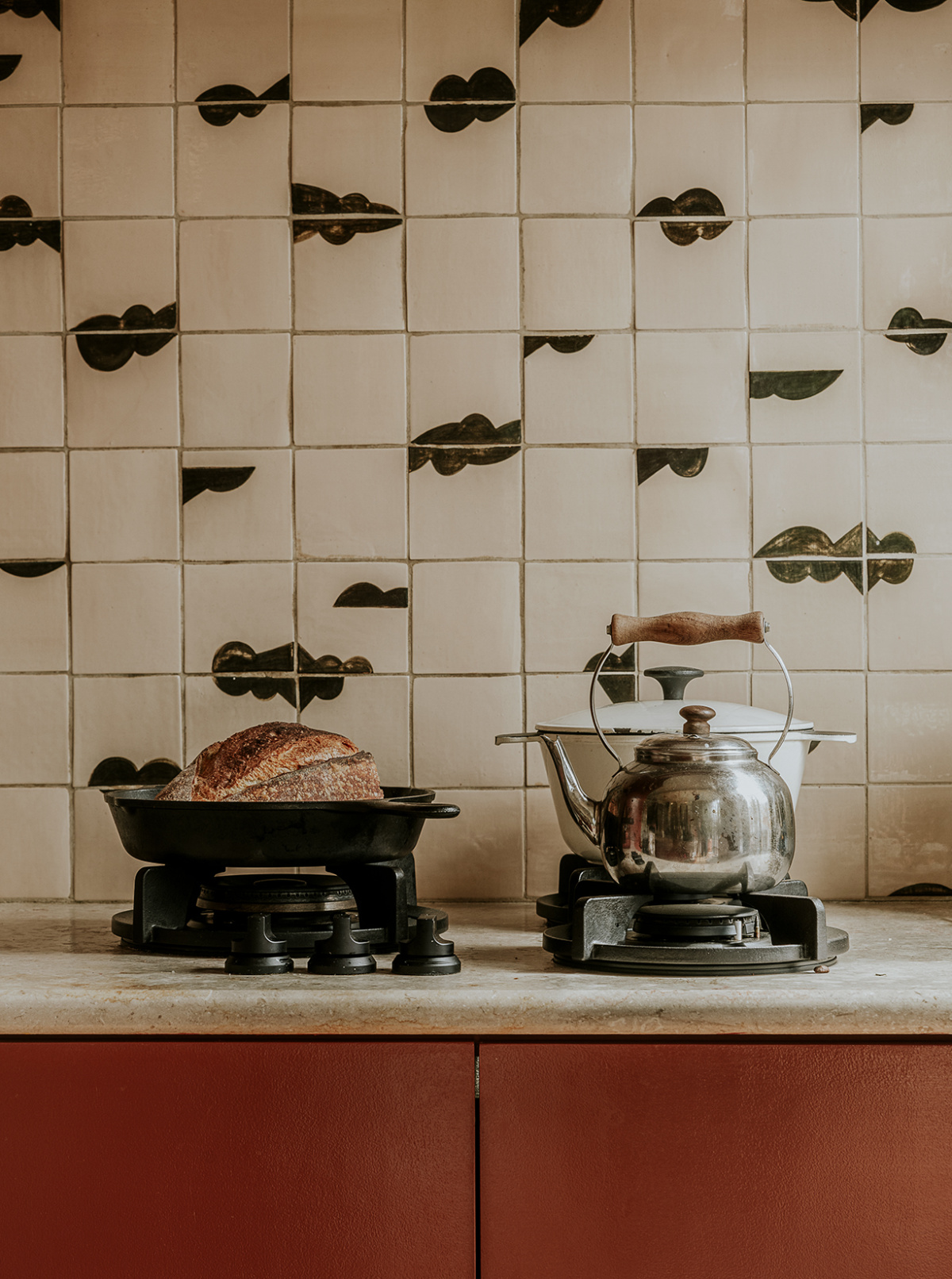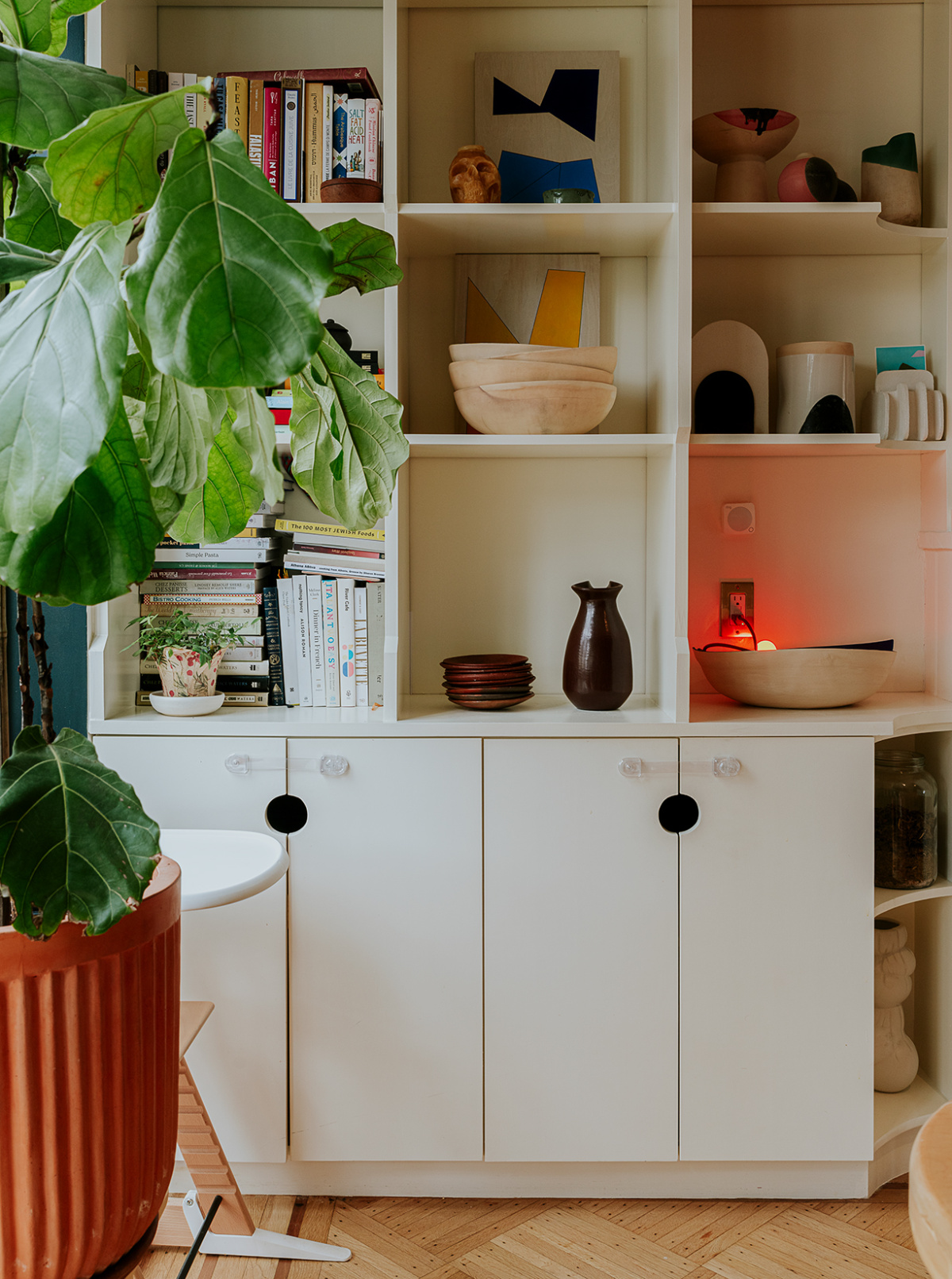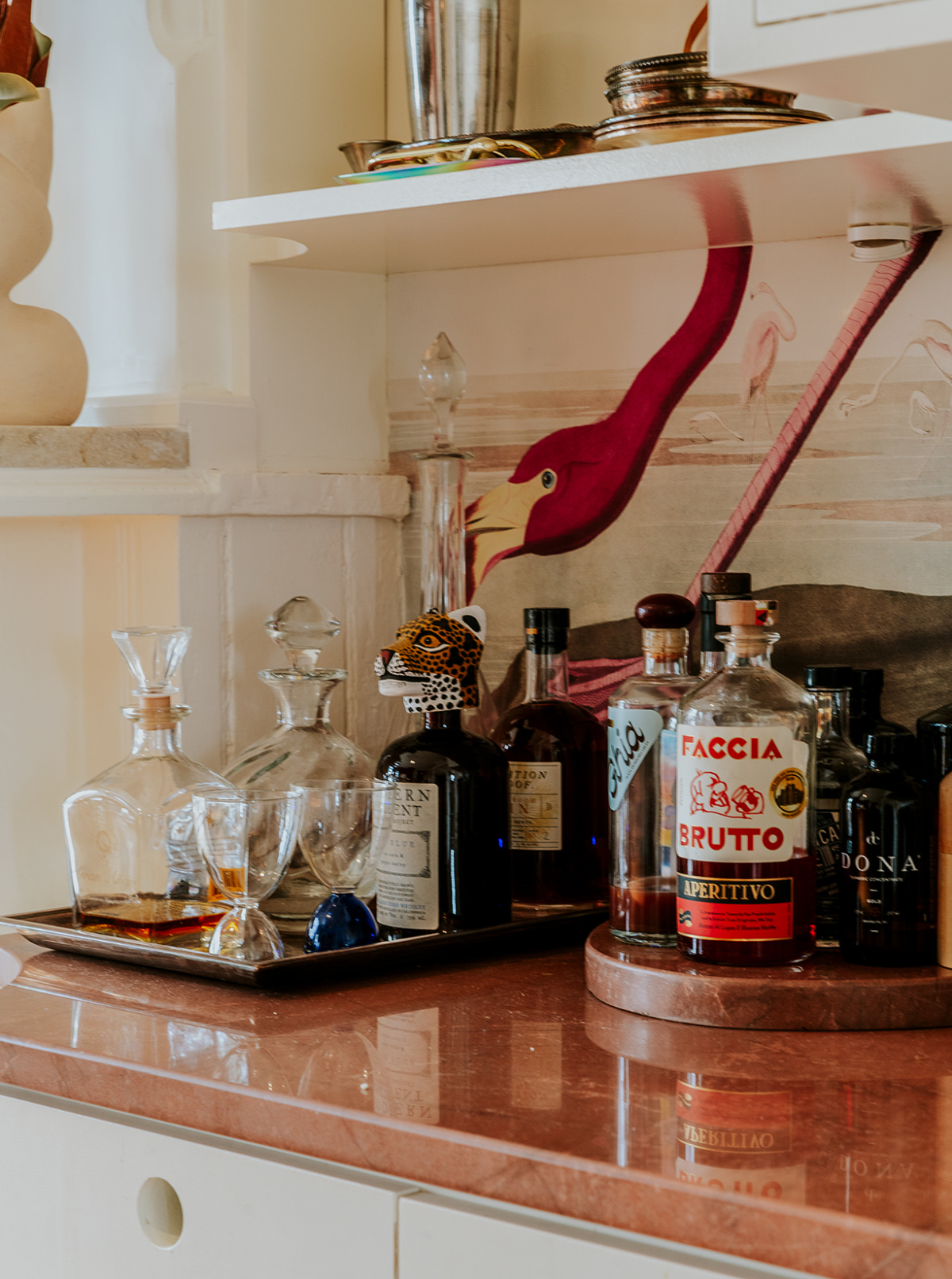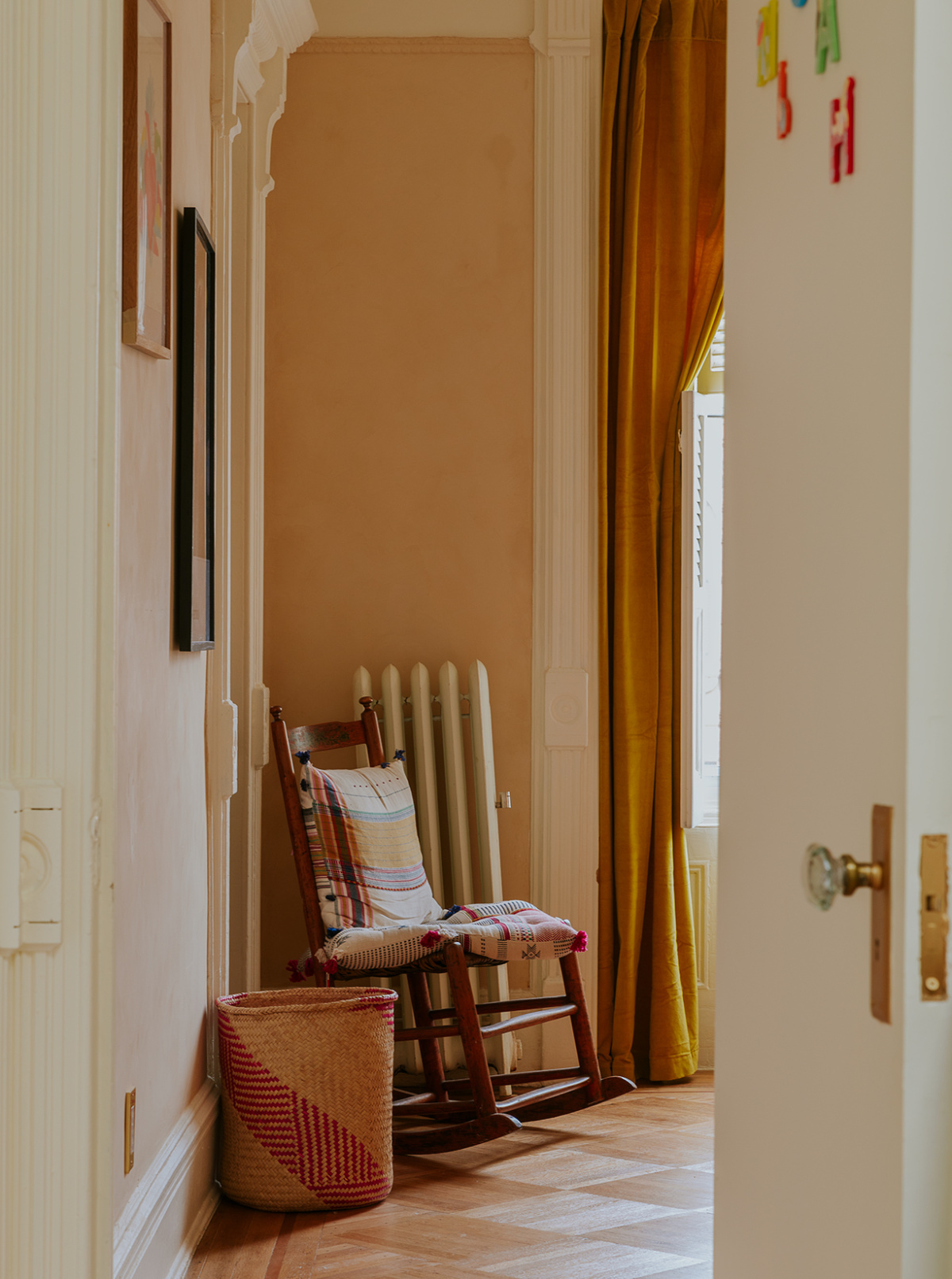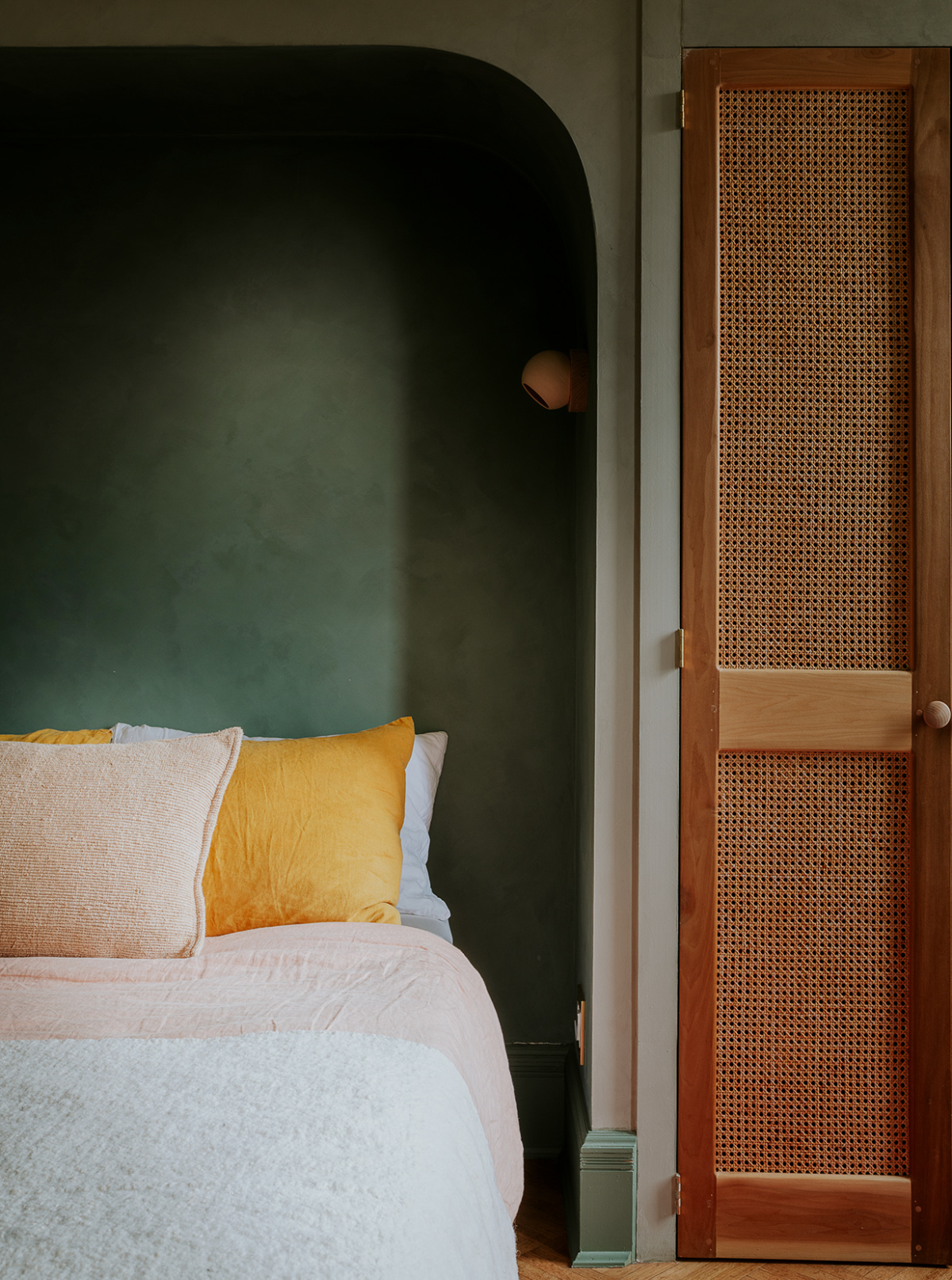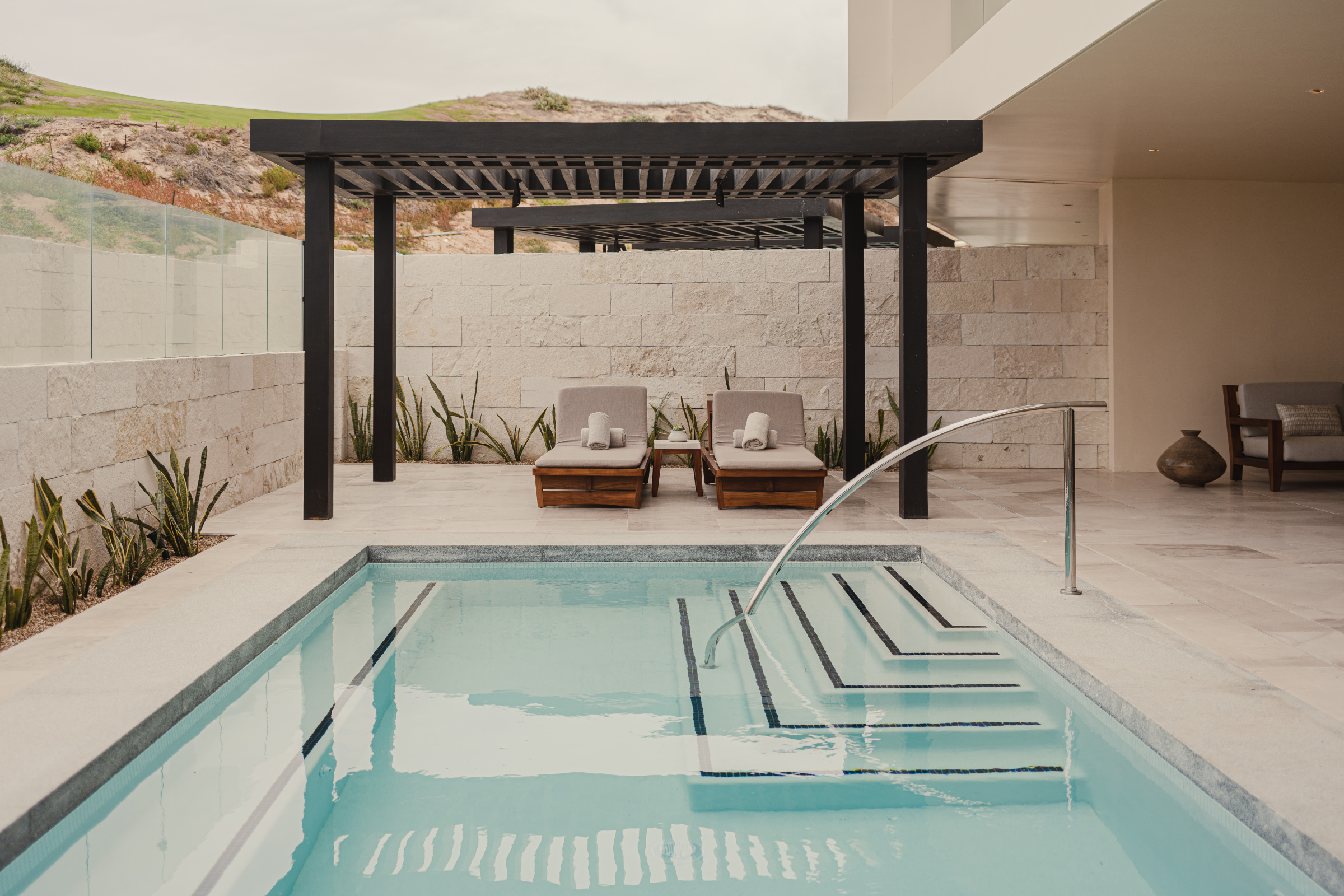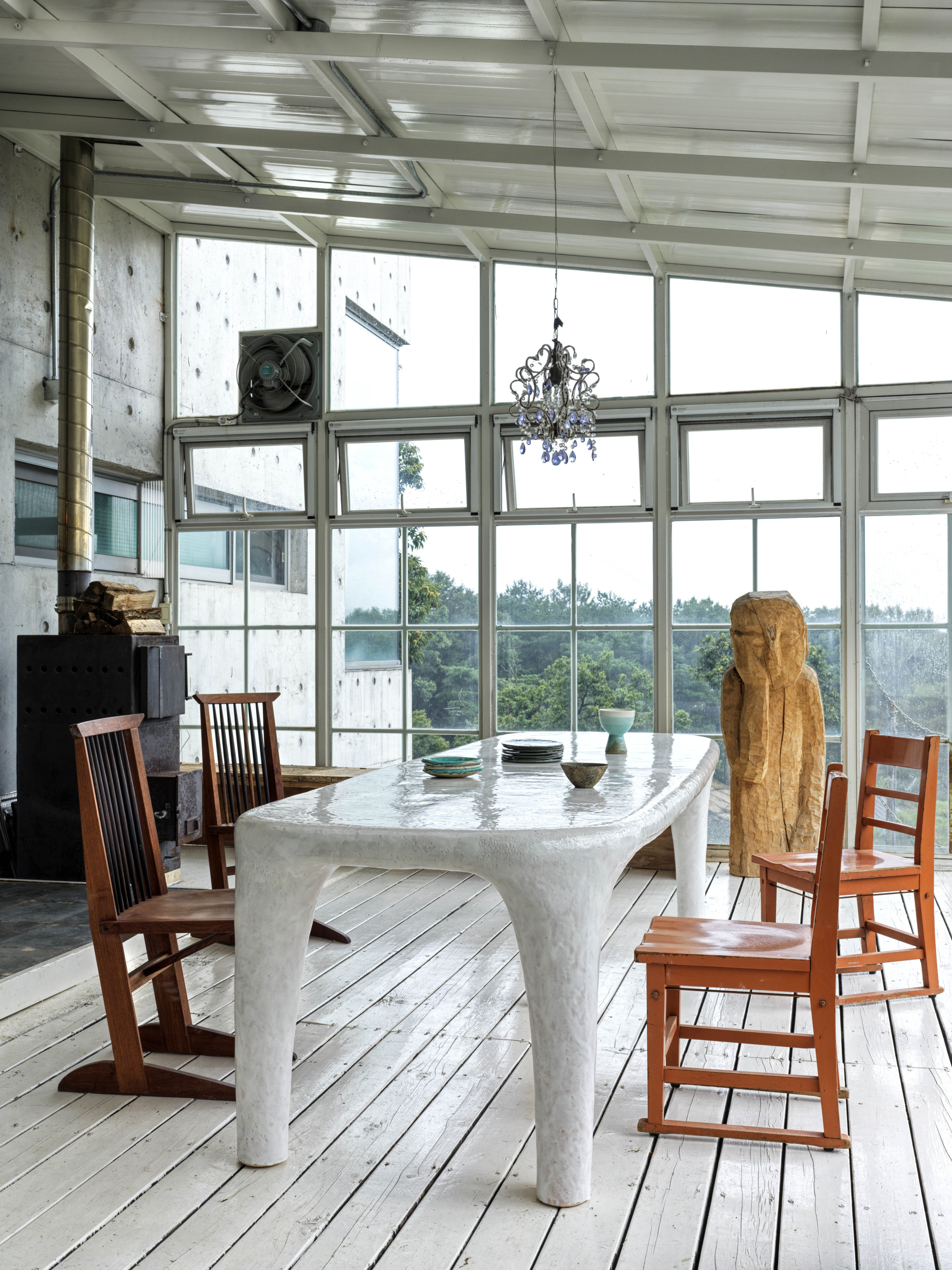Anna Polonsky loves food. The Paris native has worked in hospitality her entire career, though her journey has been a circuitous one. She studied advertising and political science, interned in fashion, and worked in a restaurant when she decided, truly, she wanted to combine her loves of design and food. She’s now been in New York for 15 years—always working in food in one way or another, from food parties to restaurant strategy to packaging design. For the past three years her agency Polonsky and Friends has been less focused on restaurant interiors and more focused on graphics. But her world continues to revolve around food and design.
“We have a big emphasis on analog design,” she says. “We don’t do digital; we really specialize in print. It’s a lot of hands-on
graphics, a lot of working with artists, still very much specializing in food. This has been going really well for us.” When she started Polonsky and Friends in 2019 after her previous partnership in The MP Shift, a design agency she cofounded in 2014, she says no one believed in not doing digital. But as with other trends, restaurants are going back to what’s handmade and what’s imperfect, she says.
When we talk Anna is surrounded by administrative work and business planning. She also runs a very successful and growing media platform called the Deligram that celebrates artisan food makers. It took off in the pandemic. “It’s a phase of being very creative, but I’m not the one doing a lot of the creative at the moment,” she laughs.
Anna works closely with her husband, artist, chef, and fellow entrepreneur Fernando Aciar, originally from Argentina, who she met through a food event she organized years ago. “We were both in food when we met but also both very curious about design and lifestyle and really starting to incorporate design in our life.”
It wasn’t love at first sight, she laughs, but it clicked a year or two later, and now they’ve been married 10 years. They were a fairly new couple when she opened her studio and he launched his art practice (he runs fefostudio and makes ceramics). “To this day we keep doing both. I do design around food, and he kept his cafe in the West Village but also does ceramics, and now he has OSTUDIO, which is very much a mix of creative coworking space, studio, wine bar, and restaurant. We really share these passions, and it’s been fun building those things together.”
Before Anna and Fernando renovated their Brooklyn brownstone in 2019 they had a bungalow in Rockaway Beach. It was their barefoot escape, complete with garden. “It was this feeling of being completely detached from the city,” Fernando says. “It really changed our lives.”
- The couple loves having a play area in the living space for their young son. “There is no plastic. It’s all nice wooden toys,” Anna says.
- Toward the end of the design the couple realized they were missing shelving. Fernando designed an S-shaped shelf on a napkin at the last minute.
Fefo, as Anna calls him, says the experience was especially meaningful having come from a very small home in Chinatown, where they lived for a year. “We felt confined. It was like a little nest. Our life changed completely from Rockaway on.”
From Rockaway they found and designed their Brooklyn home in Bed-Stuy; it would also become a family home, as they now have a young son. Just as they did with the Rockaway house, the couple wanted to preserve and celebrate the beauty of the brownstone that already existed. “It’s about respecting whatever’s been given to you and recycling the shape and the form,” Fernando says. “That’s the beauty, and there is a poetic way to live around things without imposing.”
The Brooklyn house is a two-floor walkup with a downstairs rental unit and a backyard garden. The main floor is home to the living, kitchen, and dining areas, and upstairs you’ll find the main bedroom, guest room, two bathrooms, and nursery.
In Rockaway neighbors came from all backgrounds and made you feel welcome saying hello and good morning, and the couple wanted their next place to have that same community feel. They bought in Bed-Stuy five years ago, and it’s been rapidly gentrifying since. They now rent the beach house for additional income and say they are mindful and grateful for their place in their new neighborhood. “I felt guilty in the beginning, but then I thought, ‘No. I shouldn’t feel like this; it’s completely normal. And integrating with the community is very important,” Fernando says.
- The couple commissioned work from New York-based Brazilian painter Stephanie Lucchese for above the fireplace.
- “The black and white palette downstairs seems basic, but it took us 1,000 attempts to get to the right whites and blacks,” Anna laughs. The dark staircase is a very dark green called Black Knight from Benjamin Moore, which gives it a little more warmth than a pure black, in contract with the whites.
Many of the couple’s friends were either in the Bed-Stuy neighborhood already or moved there in the following years. They share a nanny with a neighboring family, and some activities, like a music class, are run out of homes. “I love my neighborhood. It’s completely in tune with our values,” Fernando says.
While the neighborhood is quickly changing, they don’t think it will ever become, say, Fort Greene. Fernando says there’s simply not the volume for many restaurants and bars, but they have what they need to eat, drink, shop, and entertain as a family. The diversity of cultures and the community vibe makes them feel welcome. “Our family is not from here, so we needed to find somewhere that felt like home. I think about what it means for us to live in Bed-Stuy. I would not change it,” he says.
Anna agrees and hopes the communities who have made them feel so welcomed will be able to stay, even as a luxury fashion designer moves in nearby. “A lot is happening in Bed-Stuy right now. Some of those communities who have been here forever thankfully own their places so you still have a mix of people right now, and I hope it will last,” she says. “Right now we’re in a special moment in New York where you have a real mix of people, which you don’t see a lot. We’re trying to be mindful of that and be good neighbors.”
The house, though the design may evolve, feels like home, Anna says. While the couple each approaches design differently, they always find a way to make it work. She’s more of a big-picture, mood board, holistic designer, while Fernando dives into the details with a specific vision.
- The kitchen was the biggest structural change, as they opened it up to bring light in. A custom table is the result of a collaboration between the owners and for- mer OSTUDIO tenants Sarah Kim and David Zhang of Homeroom. Vintage French café chairs sourced from Nomadic Trading Co.
- Fernando, who also runs fefostudio, hand-painted the tiles in the kitchens. “I love the things he made by hand,” Anna says. “Those were the first tiles he ever made so it was cool to have them in the kitchen.”
“We were starting to incorporate design at the same time in our lives, but he did it from an artistic perspective, and I did it from an agency perspective,” Anna says. For their Bed-Stuy home she was like a creative director doing research, compromising, relaying the budget, and working with the contractor—all things she’s accustomed to working with clients and on construction sites. “He’s going to be a lot more granular than me because he makes things himself. He’s not going to just say we should get a ’60s inspired sofa. He’s going to draw it and go into all the details.”
She says they butt heads only when he can’t see the larger vision or she doesn’t understand the craft. “We don’t often work together, but when we do we find that what’s successful is to let each other have their own process. So if I commission him for lights—he’s designed lights for some of the restaurants I’ve done—I’m not telling him what I want. I’m just telling him, ‘This is what I’m doing. You do you.’ And then it’s very successful.”
In Bed-Stuy Fernando brought beautiful, unique pieces like an S-shaped shelf to life from a simple paper sketch at the last minute while Anna dreamed up the color palette and combined textures. Anna says they use color more than many people, and their brownstone was no exception. “People are scared of color. We knew we had a lot of art and ceramics and furniture that was colorful so downstairs was always going to be a little more neutral as a canvas. The upstairs was the opposite. We didn’t want the bedrooms to be packed with stuff; we wanted to keep things quite minimal and so we had more fun with colors there.”
- Ceramics from fefostudio and clay plates and a water pitcher from Mexican markets sit on plywood shelves designed by Fernando and painted in Benjamin Moore Vanilla Ice Cream. Paintings by Jane Sinclair.
- The bird wallpaper seen here is sourced from Hovia, a website with a broad portfolio of motifs and images that helps you design wallpaper to fit any dimensions.
Anna says the black and white palette downstairs may seem basic but it took them “1,000 attempts to get to the right whites and blacks.” “The staircase is actually a very dark green called Black Knight from Benjamin Moore, which gives it a little more warmth than a pure black, in contrast with the whites,” she says. “The runner was a great solution we found—more affordable than an entirely custom piece. On this site Sisal Rugs you can send your dimensions, pick different options of knits and borders, and they send it to you. We just stapled it to the stairs.”
The couple didn’t buy a lot of furniture when they moved in, instead waiting to live in the space and see what was missing. They moved in in 2019 and didn’t have armchairs for the living room, for example. Instead they built a sofa, and it was enough to hang out on at first. They spent years looking for the right armchairs, but they were all too expensive or cheap looking. After three years they rediscovered the ÖVERALLT Limited Collection IKEA armchairs they had in their rental downstairs. “We moved them up and reupholstered them. Now they are our favorite armchairs,” Anna says. The couple doesn’t have a TV, and they don’t want one. Instead they have a projector. “It’s much less of an eyesore,” Anna says.
The art above the fireplace is a commission ordered from New York–based Brazilian painter Stephanie Lucchese, a master of composition Anna says they met through a dear friend and fellow artist. To the left are black and white artworks by Brazilian artist Tom Jardim. “We fell in love with his work in Rio and schlepped the artworks in the plane,” Anna says. To the right on the sofa edge are two framed poems by Mia Moretti inspired by the recipes of Fefo and Anna, and a painting by Eva Claessens, another prolific painter and ceramicist the couple met in Uruguay years ago and now a dear friend.
Fernando repurposed a lot in the home, including stone from quarries in Brooklyn—a two-and-a-half-inch thick limestone and a beautiful cinnamon color stone used for the bar and island in the kitchen. “We wanted to feel like we are in Europe,” he says.
- Anna and Fernando preserved a lot of the home’s original features. The floors are original, and they kept many of the moldings—moving around some.
- Anna’s design of the house included pulling together the color palette—with limewash paints in the bedrooms—and thinking about texture.
He didn’t want the stone to feel cold to the touch. “I don’t like stone being in kitchens when it’s super slick, clean, and cold.” As self-described foodies, they said that cold feeling doesn’t make them want to cook. “Limestone was no doubt the stone for us. We bought these two slabs, and then we took the leftovers from the cuts for the bars and designed the table for the living room and for two side tables in our bedroom.” He let the natural shape of the leftovers dictate the legs of the tables.
The couple loves hosting, and the house lends itself nicely to making people feel comfortable, with natural light and warm spaces to sit and drink tea or have wine. A friend came over on Sunday for brunch and didn’t leave until evening, Fernando laughs.
“We’re very grateful that this happened to us, that we found this property that we were able to bring some modern into, but it also has a lot of age and a lot of 1900s details,” Fernando says. “Even the door from the tiny bathroom next to the kitchen— that door took us three nights of cleaning the glass, but the glass is beautiful. Inside we have this wallpaper; it’s magical. It feels like you are in the city, but you’re also in between Europe and South America.”
Call it design, call it craftsmanship, call it being self-aware or mindful of how you use a space—Anna and Fernando just call it home. They never wanted the design to feel like something you’d see in a glossy magazine or a showroom for Fernando’s work.
“When I think about our home in Brooklyn I think about how incredible it is to be able to create your own temple,” Fernando says. “Home is a temple, and when you are participating in 100% of everything it aligns with who you are. When we are there we always feel rested.”
A version of this article originally appeared in Sixtysix Issue 10 with the headline “Color and Character.” Subscribe today.
